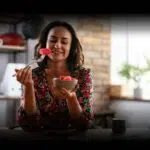Valmiki Jayanti, celebrated on the full moon night or Purnima of the Ashwin month, which falls on October 7 this year, sees the Hindu community worldwide celebrating the birth of the great sage-poet Valmiki. Also known as ‘Pragat Diwas,’ the day is marked with processions or ‘Shobha Yatras,’ in which devotees of the sage sing hymns and songs to celebrate his legend. India, especially the northern part, is a sight to behold on this day as it is completely immersed in devotional festivities.
History of Valmiki Jayanti
Lord Rama inspires and is revered by Hindus across the world, and the story of his life is celebrated in Indian homes. On Valmiki Jayanti, Hindus pay respects to the person who brought Lord Rama’s story to the world. The title ‘Maharishi,’ meaning ‘great monk’ in Sanskrit, is bestowed on sage Valmiki for composing the epic “Ramayana.” Around the 5th century B.C., he encapsulated Lord Rama’s story in the immortal epic “Ramayana.” He compiled the epic in the Sanskrit language across 24,000 ‘shlokas’ or verses and 7 ‘kandas’ or cantos.
Even though there is no known record of his exact birth date, Valmiki Jayanti is celebrated annually on the full moon day during the Ashwin month of the Hindu lunar calendar. This is because legend has it that the sage’s face had a glow resembling the shine of the full moon. The day falls between September and October on the Gregorian calendar.
On this day every year, Hindus partake in the ‘Shobha Yatras’ as devotees and followers of the Valmiki sect sing songs extolling the sage and Lord Rama’s virtues. At many Rama temples across India, verses from the “Ramayana” are recited. A portrait of Valmiki, depicting a monk with a glowing face clad in saffron-colored robes, and busily writing on a leaf with a quill, grace the festivities. The atmosphere is steeped in devotion.
Valmiki Jayanti timeline
Although there is no clear record, the "Ramayana" is popularly believed to have been written by Maharishi Valmiki in the 5th century B.C.
During the Chola reign, a popular temple dedicated to Valmiki is built in Thiruvanmiyur (a corrupted version of ‘Thiru-Valmiki-Oor’), Chennai, on the site where the sage rested after writing “Ramayana.”
The first Indian film on the life of the poet is released — it is called “Valmiki” and directed by G.V. Sane.
With the coronavirus pandemic raging, the world holds muted celebrations of the great sage's birth.
Valmiki Jayanti FAQs
Who gave sage Valmiki his name?
While performing penance by chanting Lord Rama’s name, ants created an anthill around the sage. Hence, the monk Narada rechristened him ‘Valmiki,’ meaning ‘the one who emerges from a Valmika’ or ‘anthill’ in Sanskrit.
Is Valmiki Jayanti a national holiday?
Valmiki Jayanti is an optional holiday. India’s holiday laws limit employees to a certain number of holidays from a list. Some may choose not to work on this day, but most employers keep their businesses open.
Who is the father of Valmiki?
Valmiki’s father is Sumali. Records specify that Sumali’s real name was Pracheta and he was a Brahmin.
How do you wish Valmiki Jayanti?
Wish your Hindu friends a very happy day, sending them blessings, all the goodness in the world, and no trace of sorrow, on this auspicious occasion of Valmiki Jayanti.
How To Observe Valmiki Jayanti
Participate in ‘Shobha Yatras’
On this day, ‘Shobha Yatras,’ meaning ‘processions,’ are carried out across many locations by devotees and followers of the Valmiki sect. With a portrait of the sage in the center, the devotees are immersed in singing devotional hymns or songs extolling the sage's virtues. It is an amazing spectacle!
Pay obeisance to the sage at the Thiruvanmiyur temple
In the southern part of India, the temple in Chennai, Tamil Nadu, believed to be nearly 1,300 years old, is located in the middle of an area aptly called ‘Valmiki Nagar.’ Visit this temple to witness the glorious celebrations marking the sage's birth.
Attend a recital of the "Ramayana"
At many temples of Lord Rama across India and the world, recitals of the epic are held on this day. Hearing the verses or ‘shlokas,’ as they are called, will give you goosebumps. Even if you don't understand Sanskrit, the festive atmosphere of devotion will fill you with reverence for the sage.
5 Of Valmiki’s Names Or Titles
Maharishi
The title of "Maharishi," meaning ‘great sage’ in Sanskrit, is reserved for revered saints in Hindu custom.
Ratnakara
According to one belief, before becoming a saint, Valmiki was a highway robber named ‘Ratnakara’ who turned to the righteous path after an interaction with the monk Narada.
Adikavi
Sage Valmiki was conferred with this title as the first poet to write in the Sanskrit language.
Agni Sharma
The scriptures say that sage Valmiki was born in a Brahmin household as Agni Sharma.
Bala Shah
Members of the Valmiki sect deify sage Valmiki as ‘Bala Shah,’ meaning ‘patron saint.’
Why Valmiki Jayanti is Important
It is a spiritual experience
Shobha Yatras and "Ramayana" recitals fill the air with devotion and spirituality. It relaxes the mind and soul and temporarily frees us from the clutches of materiality. The ephemeral experience has the effect of relaxing and de-stressing our anxious minds.
We get to witness glorious Hindu traditions
For tourists and people on a spiritual journey to India, it is a once-in-a-lifetime experience. The day displays the vibrant culture of India's Hindu community. It gives visitors a glimpse into why the country is a prime spiritual destination.
It is a great introduction to the subject of religion
The celebrations and festivities on the day stoke curiosity. It is an excellent opportunity to introduce the subject of God and religion to children. Grown-ups can explain the significance of the epic "Ramayana" and the greatness of Lord Rama.
Valmiki Jayanti dates
| Year | Date | Day |
|---|---|---|
| 2024 | October 17 | Thursday |
| 2025 | October 7 | Tuesday |
| 2026 | October 26 | Monday |













